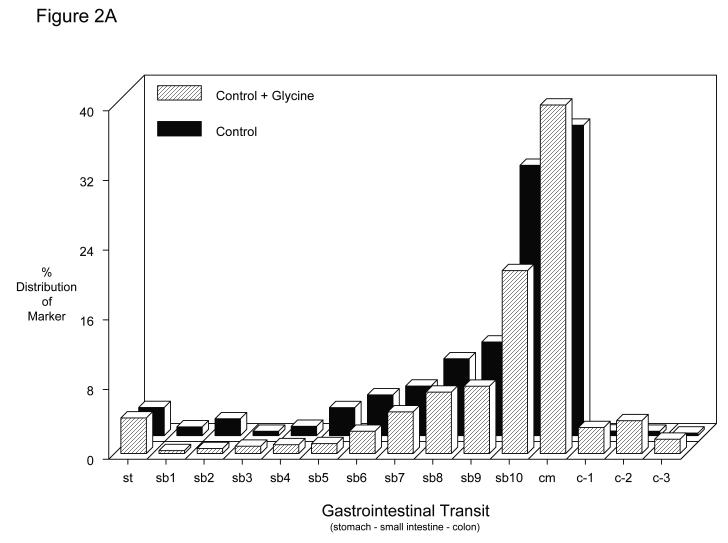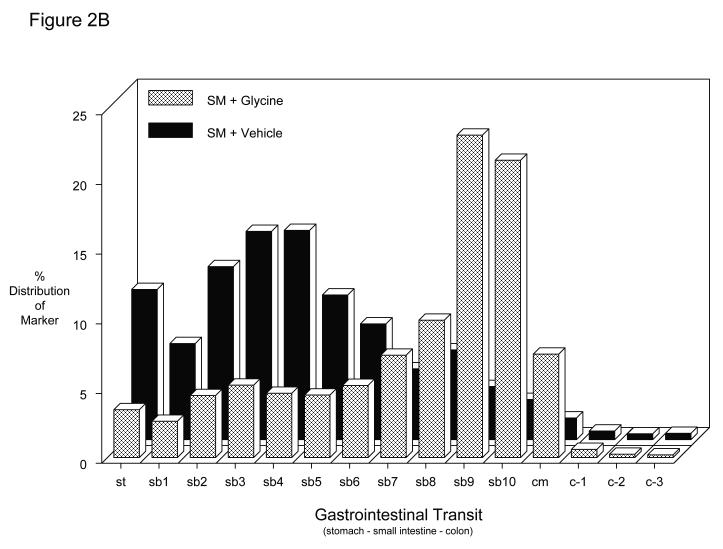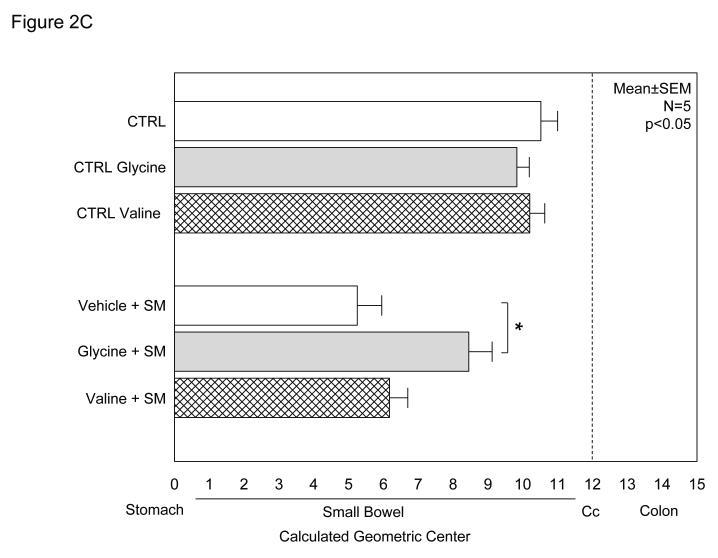Figure 2.
A-C. Gastrointestinal transit histograms and calculated geometric center histogram for the distribution of fluorescein-labeled dextran along the rat gastrointestinal tract 2 hours after oral administration (SM: intestinal manipulation, St = stomach, SB = small bowel, CM = cecum, C = colon). 2A.) Gastrointestinal transit distribution histograms for control and glycine pretreated control showing the progression of the transit marker to the distal regions of the small intestine over a period of 2 hours. 2B.) Gastrointestinal transit distribution histograms for vehicle and glycine pretreated animals which had been surgically manipulated 24 hours prior to measurement. Vehicle pretreatment resulted in a marked delay in gastrointestinal transit. Glycine pretreatment significantly improved postoperative gastrointestinal transit with the fluorescent marker transported more caudally compared to the vehicle pretreated manipulated rodents (N = 6 each). 2C.) Histogram demonstrating calculated transit geometric centers (GC) for six groups of rats. Control vehicle, glycine and valine pretreated non-operated rats had a geometric center approximately 10 indicating transit near to the cecum. Surgical manipulation (SM) with vehicle treatment significantly reduced the GC, while this reduction was prevented by glycine immunomodulation pretreatment. In contrast, valine did not significantly improve gastrointestinal transit. (N = 6 each, mean±SEM; two-way ANOVA with Tukey post-hoc group comparisons with * = p-values < 0.05).



